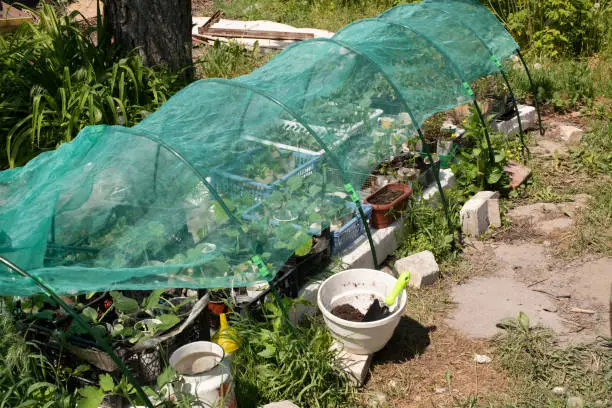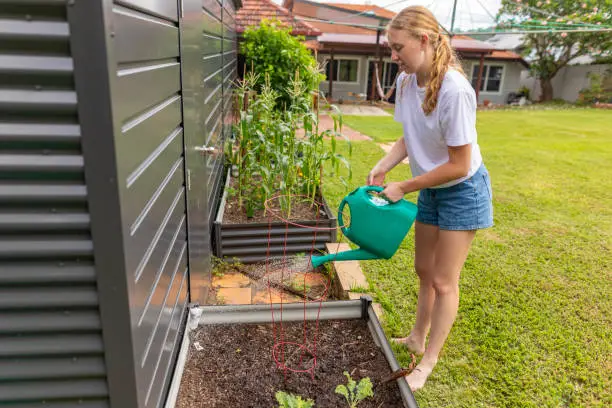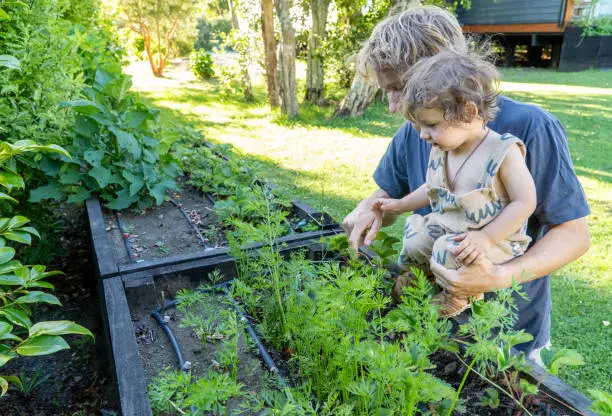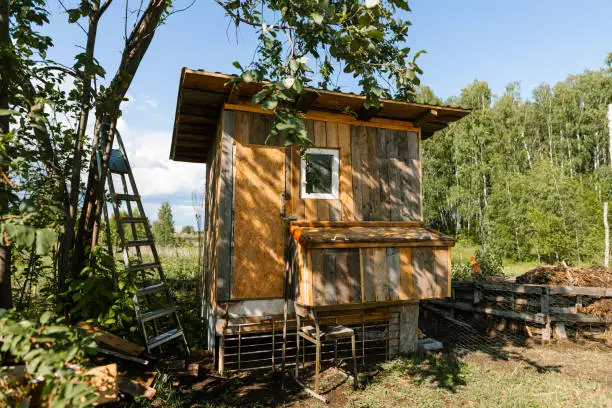You’ve chosen to start beekeeping in your backyard homesteading. You did well! It’s a honey-sweet hobby. Before you imagine golden nectar jars, let’s talk gear. The appropriate equipment can make or break your beekeeping endeavor.
First, get a hive. The Langstroth hive is popular with novices. It’s like Hives’ iPhone—user-friendly and popular. Packed boxes with removable frames make this hive easy to inspect and gather honey. If you want simplicity and natural bee activity, choose a top-bar hive.
Protective gear is next. Bees are usually calm but have their time. Good bee suits are essential unless you like being stung (which you won’t). No one likes a bee in their bonnet, so look for suits with full-zip veils. Gloves are necessary, but others prefer gloveless dexterity. Good for you for trying that approach!
Smokers are another beekeeping essential. Masking alarm pheromones and making bees eat honey calms them, like a Thanksgiving dinner snooze. Pine needles or untreated burlap make good smoker fuel.
Hive tools are beekeeping’s Swiss Army knives. These tools separate frames and remove wax or propolis. These bad boys will make you feel like MacGyver.
Be aware of feeders. Bees require food in early spring and late fall when blossoms are scarce. As an energy drink for buzzing friends, sugar syrup works well.
Pest control is less glamorous but necessary. Varroa mites, tiny vampires, can destroy colonies if unmanaged. Screened bottom boards ventilate and monitor mite levels without chemicals.

Make sure your hive has enough airflow! Dampness can indicate trouble faster than you can say “beekeeper.” Proper ventilation keeps hives dry and mold-free.
Do you love data? Buy a hive scale or monitoring device to track weight changes, which indicate colony health and productivity.
Honey harvesting is the reward for your efforts, but it takes special equipment! An extractor spins frames quickly to remove honey without harming combs, a game-changer from purists’ crushing-and-straining methods.
Jars and labels seem inconsequential once you’re faced with gallons of unbottled liquid gold and need to keep it neatly and legally if selling locally.
Finally, books and online courses offer valuable insights from seasoned pros who’ve been there, done that, got stung repeatedly, learned lessons, and shared wisdom freely available thanks to the internet age. Isn’t it wonderful?
The scoop on necessary backyard beekeeping equipment minus fluff, comedy, and practicality should leave you feeling prepared, eager, and ready for the loveliest ride of your life. Happy buzzing buddies!
Maintaining Healthy Backyard Bees-Free
You’ve decided to keep backyard bees. Fantastic! We need these pollinators, and having them around can be sweet. Like other living things, bees need care to stay healthy. Here are some practical bee health and illness prevention tips for your backyard hive.
Let’s start with the basics. Bees value cleanliness second to godliness, and clean hives reduce disease. Check your hives for problems regularly. Watch for dead bees, odd activity, or anything else. I promise you’ll quickly learn the usual.

Varroa mites plague many beekeepers. If untreated, these tiny parasites can destroy a bee colony. Regular mite examinations are necessary. To assess mite levels, use a sugar shake or alcohol wash.
If you see mites, relax! Many chemical and natural remedies are available. Some people use powdered sugar dusting to get bees to groom themselves more and remove mites.
Nosema, a gut-affecting fungal infection in adult bees, is another pest. Your colony may diminish due to diarrhea (bee feces). Strong colonies with sufficient feed and clean water are the best Nosema defense.
Let’s talk about bee nutrition. You may need to feed them sugar syrup or pollen patties in late summer or early spring when nectar flow is limited. Consider it a boost when nature isn’t enough.
New beekeepers typically need to pay more attention to water. Bees need water for sipping and cooling their colony with evaporation, like air conditioning! Provide fresh water nearby.
American and European foulbroods are next. These bacterial infections can destroy hives if not caught early. Again, hygiene is essential since AFB spores can survive on equipment for decades! If you suspect foulbrood—sunk brood caps and a foul odor—contact local authorities immediately, as it often entails burning diseased equipment.
Swarming may sound scary, but it’s natural. However, too much swarming can weaken your colony because half leave with the old queen while the other half raise new queens, which takes time and reduces productivity, including honey production, and makes you more vulnerable to pests and diseases.
You can start backyard beekeeping. That’s a good pick! This honey-sweet hobby will have you visualizing golden nectar jars in no time, but first, gear. The right gear may make or destroy beekeeping.
Start with a hive. A Langstroth hive is popular with beginners. It’s like the iPhone of Hives: popular and user-friendly. Packed boxes with removable frames make this hive easy to inspect and collect honey. Choose a top bar hive for simplicity and natural bee activity.
Next, you need protective gear. Though peaceful, bees have their times. Bee suits are necessary unless you like being stung (which you won’t). Bees in bonnets are annoying, so choose outfits with full-zip veils. Gloves are required, but others prefer gloveless dexterity. You did well to try that method!
Smokers are also needed in beekeeping. Masking alarm pheromones and feeding bees honey settles them like a post-Thanksgiving nap. Untreated burlap or pine needles make good smoker fuel.
Hive tools are beekeeping’s Swiss Army knives. Separate frames and remove wax or propolis using these tools. This bad boy will make you feel MacGyver.
Remember to feed. Bees need nourishment in early spring and late fall when flowers are limited. Consider sugar syrup an energy drink for buzzing pals.
Pest control is less attractive but crucial. Unmanaged varroa mites, little vampires, can kill colonies. Chemical-free screened bottom boards ventilate and monitor mite levels.
Ensure your hive has enough air! Dampness can signal trouble sooner than “beekeeper.” Good airflow keeps hives dry and mold-free.
Do you like data? Track weight variations with a hive scale or monitoring equipment to determine colony health and productivity.
Honey gathering rewards your efforts, but it requires special equipment! An extractor spins frames swiftly to obtain honey without damaging combs, unlike purists’ crushing-and-straining.
Jars and labels seem insignificant once you need to store liters of unbottled liquid gold neatly and lawfully for local sales.
Finally, books and online courses give information from seasoned pros who’ve been there, done that, got stung repeatedly, learned lessons, and shared it freely, thanks to the internet. Wonderful, right?
This backyard beekeeping equipment guide should prepare you for the best rife. Buzz on, pals!





Leave a Reply
You must be logged in to post a comment.